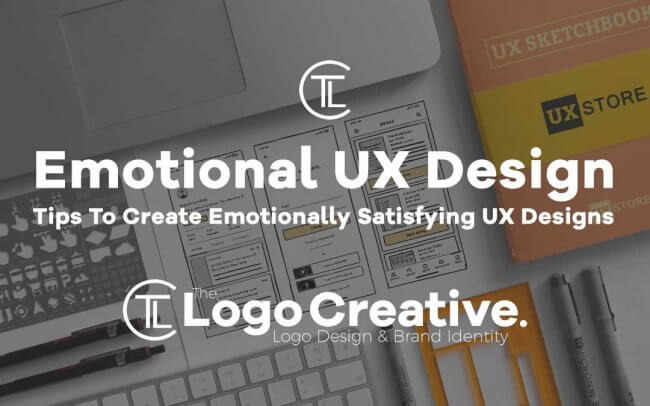What does it mean to create a design that satisfies a person on an emotional level? That is a pretty loaded question, yet fair enough for those that are aiming to improve on the quality of their project outputs. Some would say it is the aesthetic factor that reels people in. Others would counter that by saying the emotional effect is due more to the way the website works. The truth would be a mixture of both. Read on to find out some Tips To Create Emotionally Satisfying UX Designs.
When it comes to the overall UX designs, one should always take both the functionality and the aesthetic into account. After all, it is how your website affects others that impact their behavior towards you. If they come to believe that your brand is worth trusting and if there are no problems whatsoever in using your site, then you can expect a greater chance of a sale or any other desired outcome. The exact opposite can also be expected if your website constantly crashes or if the design is something unappealing to them. Irritated users often don’t make for long-term customers. Having said that, there’s still the matter of creating emotionally-satisfying UX & UI designs examples that need attending to. Without further ado, here are tips that may be to your liking:
Table of Contents
Tip # 1: Contrasting is key to delighting visitors
It is worth noting that online visitors can make decisions regarding your site as quickly as 50 milliseconds. That means a single glance is usually enough to communicate to them what your brand is all about. With its credibility on the line, you need to impress as fast as you can, and a surefire way to do that would be paying attention to tiny changes in your design. Take note that this is far from an easy thing; you’ve got things like color changes, contrast, white space usage, and text fonts to take into consideration. Each one has an impact on both the engagement rate and your conversions from your website.
As an example, when redesigning a website, you may conduct various A/B tests so you can learn how your results are impacted by color changes. You may find your results quite surprising. Once the CTA button is colored yellow, conversion may jump by a large percentage compared to when it was still green, as part of the example. This is because colors have psychological implications and some will be more pleasing or enticing when compared to others. Besides that, you can also take into account how people relate to certain layouts and designs based on the psychology behind it. A/B tests are quite useful in figuring all these out.
Tip # 2: Connection through brand personality
When people develop a genuine connection to a brand’s personality, you can expect a certain level of loyalty that often leads to profit. This connection is useful since emotionally-connected customers tend to advocate brands more to their friends and family, not to mention they also tend to spend much more. You can expect a greater emotional connection if customers feel cared for, confident, or unique. So now the question here is: how can you accomplish this with your UX design?
The answer lies in the incorporation of your brand’s personality through the website’s various minute details. Some may end up making use of a voice-enabled assistant or perhaps through a personable chatbot. This particular example is the creation of a more conversational UX design that can allow customers to have a greater degree of interaction. By providing something specific for your customers to connect to in your website, you deepen whatever emotional connection they have to your brand.
Tip # 3: Provide both convenience and efficiency
A few things that are bound to irritate and push away customers would be issues like difficult site navigation, slow loading speed, and unhelpful searches. These three are top sources of frustration for many customers and getting rid of them is a step in the right direction for any business. Not only are convenience and efficiency necessary for customer satisfaction, but they also tend to allow positive CX to be worth much higher in terms of price point. Every change in design or in alteration affects customer interaction, which is something brands need to be more aware of.
The most practical and effective solution is to design your websites with simplicity in mind. Have a concise navigation tab and be as clear as possible when it comes to your CTAs. Employing these can often go a long way concerning greater convenience and efficiency. Another thing to keep in mind would be design alterations going from desktop to mobile layouts. As more people use phones for initial searches, this becomes an imperative issue to tackle. The design must be similar enough to invoke the same positive feelings, but even that is outweighed by the convenience and flow of the mobile display.
Tip # 4: Reactions and Rewards
There is a simple fact that needs acknowledgment: we are all motivated by rewards, regardless of the shape or form it comes in. This is something that entrepreneurs are keenly aware of; customers tend to be more likely to make a purchase if they are offered some kind of reward program. With that said, the rewards offered also need to be tailored to fit specific wants and needs. This is something that you can easily do for your website, given your knowledge and understanding of what your own customers desire.
If you have yet to learn what they want or if your knowledge isn’t quite as deep as it should be, there is already a solution to such a dilemma. Customers also tend to be more motivated to impart their personal data should there be something in it for them like personalized rewards. Incorporating personalization as a reactive feature in your website designs is yet another excellent way to connect with your audience. Through this, you can make their interactions with your site truly unique and gives them a say in what it is that they can get out of the whole experience.
As you can see, the way your customers feel about your website impacts what perceptions they have and the actions they take towards your brand. Websites significantly influence experiences by controlling people’s emotional response to its designs. Every detail is important, from the color scheme all the way to the intricacies of its layout. It is up to you to ensure that your customers emotionally connect with you through the overall experience by finding a unique balance between function and emotion.
 Author Bio
Author Bio
Lisa Smith is a designer and content writer at Blueberry Labs an innovative global product company with cutting-edge technology, powerful content & creative designs.

